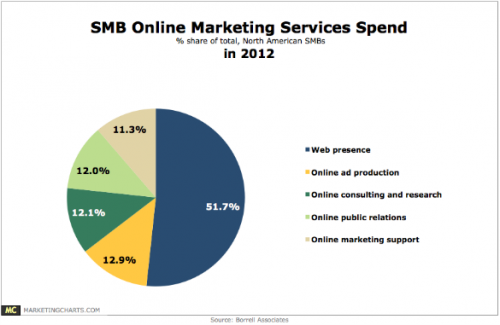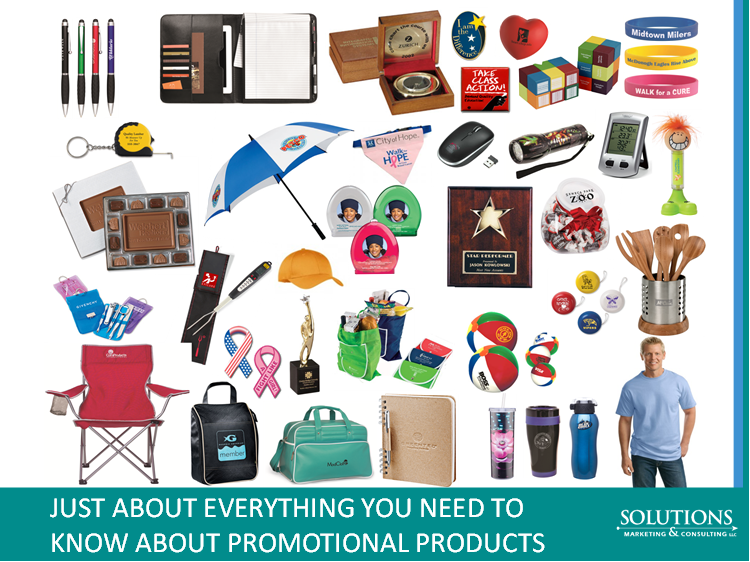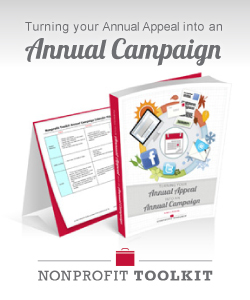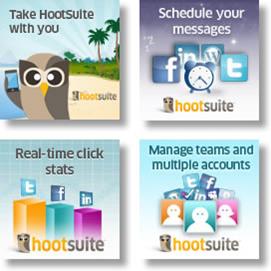Search engine optimization
Guest post by Jacob Puhl
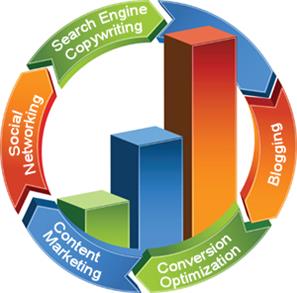 Right now, your website is like a bucket with a hole in the bottom; maybe several. Trickles of your diligent investment to gain targeted traffic are going to waste and the holes must be plugged up before they cost you any more money.
Right now, your website is like a bucket with a hole in the bottom; maybe several. Trickles of your diligent investment to gain targeted traffic are going to waste and the holes must be plugged up before they cost you any more money.
The number of considerations in a strong homepage is vast, making it easy to overlook business essentials that can cost you clients. Here are 9 critical website elements to make sure this doesn’t happen.
1. Obsess Over Your Headline
Even major international companies have some terrible homepage headlines these days. Some famous copywriters say that up to 90% of their time on a project is spent on a homepage’s headline. It’s that important. Take a look at yours now and consider if it accurately conveys your message.
2. Does Your Website Pass the Blink Test?
The so-called “blink test” states that the niche, product and service of your site must be recognizable within three seconds of visiting. If it fails to deliver on this, your bounce rate will be much higher than it needs be. Relevant images and a strong headline go along way here.
3. Logical Layout and Menu Structure
It doesn’t take a professor in usability testing to know that the logical layout and menu are important for the user experience. But, when was the last time you asked yourself whether yours met this criteria? It’s easy to become overly familiar with your site and asking for feedback from friends or family who’ve never used it before can prove invaluable.
4. A Clear Call-to-Action (CTA)
You’re much less likely to see the results you want without calling your readers to action. Have your CTA above the fold and consider including a second down the bottom to save people from scrolling all the way back up. Contrast the CTA colors with the rest of the site and always use a strong command on the clickable button rather than something generic such as “submit.”
5. A Good Reason to Opt-in
A clear and compelling CTA is one half of the battle. The second is making sure you give people a good reason to do so. Whether this is a free evaluation or report, an informative e-book or other enticing promise, make sure to lead with value when attempting to connect with your potential customers.
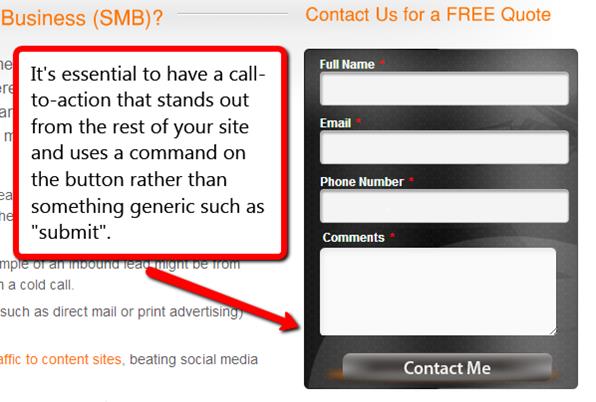
6. Testimonials
Social proof is becoming more important than ever and with review sites thriving, there’s even less of an excuse not to include positive testimonials from happy clients on your site. Develop a strategy for gaining as many as possible and enjoy the boost to your conversions.
7. About Us Page
Anyone who’s spent time in Google analytics will know that new visitors regularly flock to the About Us page. Including portrait photos and short bio paragraphs about the team members can help to improve conversions and adds a more personal connection with your audience.
8. Social Media Buttons
It’s rare to see a website without social sharing buttons these days, but it’s so important that it’s still worth mentioning. Make sure you opt for designs which complement your website theme but also stand out to be noticed.
9. A Blog
A blog has long been an essential cornerstone of any good search engine optimization (SEO) campaign. Changes to the Google algorithm over the past couple of years have meant it’s even more important to be generating high quality content. Stamp yourself as the industry authority you are by adding as much niche-relevant value to your blog.
Have I missed anything? Please share.
—————————————————————————————————————————-
Jacob Puhl is Cofounder of Firegang Digital Marketing, a local SEO, web design and digital marketing agency for small businesses. To contact Jacob, email jacobpuhl at www.firegangdigitalmarketing.com or follow him on twitter @jacobpuhl
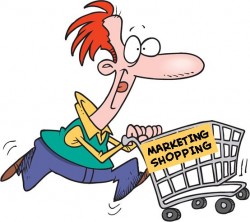 Content marketers want you to believe that content is everything in marketing now. Same thing with the in-bound marketers, mobile marketers, database marketers, SEO (search engine optimization) marketers, social media marketers, and so on and so on…
Content marketers want you to believe that content is everything in marketing now. Same thing with the in-bound marketers, mobile marketers, database marketers, SEO (search engine optimization) marketers, social media marketers, and so on and so on…
Marketing has embraced every new channel and technology that it changes at the speed of light. And, with those changes, comes specialists who claim that theirs is the best on the block for your small business or nonprofit organization.
How can anyone in marketing claim that one channel or one method is the “be all and end all?”
Let’s say that you are planning a dinner party that includes your boss and your immediate team. What’s your objective?
Is it to impress the boss so s/he considers you for a promotion? Is it to prepare for requesting a raise? Is it to show your appreciation?
Whatever your goal is for this dinner party, your menu, table décor, room ambiance, and appearance will affect the outcome. You prepare a shopping list and hit the stores.
Everything you select has to be ‘just right.’ The combination of every element must blend well. You wouldn’t serve meat loaf if you set a formal table. On the other hand, you wouldn’t serve foie gras if it’s a casual backyard dinner. You’d look for a good balance of components to set the tone. It’s the same thing in marketing.
Why would you rely on one marketing channel at the expense of the others?
What was the most important part of the dinner party story? If you guessed the shopping list, you were right!
Every business and organization needs to create its own marketing shopping list based on its overall objectives. The list cannot be plucked from anywhere. It needs to rely on science.
Got a few bucks? Hire a marketing researcher.
Short on cash? Read up on conducting online surveys and how to construct questions.
Run a couple of informal focus groups. Ask your existing (and prospective) customers — clients, patients, patrons, donors, volunteers, students — pertinent questions that help you understand what motivates them to use your products or services or support your nonprofit. Discover what their preferred communications channels are. Ask them if they have referred your organization to others and why.
Once you understand what makes them tick, where they get their information, why they like you (or don’t), and more, only then can you create your marketing shopping list — your marketing strategy and tactics.
So, if you’re feeling pulled in multiple marketing directions, take a pause. Make sure that every strategy and tactic you employ helps to reach your objectives.
Why waste time, effort, and money on things that may, or may not work? Wouldn’t you rather make better informed decisions?
Do you feel pulled and influenced by multiple marketing directions? What are you going to do about it?
 Doesn’t it seem like everyone you know on LinkedIn is adding endorsements to people’s profiles? And, have you noticed how many of them have never worked with the people they’re endorsing?
Doesn’t it seem like everyone you know on LinkedIn is adding endorsements to people’s profiles? And, have you noticed how many of them have never worked with the people they’re endorsing?
As with any new technology or feature, it takes time for an etiquette to develop. Having a lot of endorsements is good for your search engine optimization and the brand perception that visitors will have when they review your profile.
But, let’s try to keep these endorsements authentic!
1. If you know the person who endorsed you, you can reciprocate IF you can vouch for any of their skills. It’s not a numbers game, so if you can only check off one or two, that’s fine. It doesn’t have to be tit for tat.
2. If you don’t know the individuals, or haven’t been privy to their skills and talents, you can still reciprocate. Look at their profiles and check their education and background. If they have a degree or a background in something specific, you can bet they have some knowledge in that field. So, it’s safe to check off those skills. What you don’t want to do is endorse skills for which you have no proof or experience. That defeats the purpose.
3. When you endorse someone, you are giving her a thumbs up. If one of your connections goes on to hire her, and she doesn’t work out, are you to blame? Of course not! But, there’s always a risk - even if small - that your endorsement helps contribute to someone else’s decision to hire or contract with her. If you look at it that way, you may be less liberal with the check-offs.
Get this…18 million users have given LI endorsements and 58 million have received them!
What do YOU think of LinkedIn endorsements? Have you been endorsing people?
 Women business owners get it - marketing is bound to make a big difference in their businesses. According to a national survey of women business owners (WBOs) conducted by Web.com Group, Inc. and the National Association of Women Business Owners (NAWBO), nearly three quarters (73%) of WBOs plan to invest more in marketing in 2013.
Women business owners get it - marketing is bound to make a big difference in their businesses. According to a national survey of women business owners (WBOs) conducted by Web.com Group, Inc. and the National Association of Women Business Owners (NAWBO), nearly three quarters (73%) of WBOs plan to invest more in marketing in 2013.
Specifically, they will invest in social media marketing (36%) and search engine optimization (SEO) (36%). In fact, nearly half (44%) predict that social media and SEO are the future of small business marketing.
Interestingly, WBOs anticipated that traditional outreach approaches, including print and direct mail (1.6%), online advertising (4.4%) and email marketing (6.2%), will have less impact on small business marketing in the future.
When considering what marketing tactics currently have the greatest impact on a business’ bottom line, more than half (52%) of respondents indicated that website design and maintenance was very important, followed by social media marketing and SEO (38%) and email marketing (25%). WBOs also indicated that LinkedIn (27%) is the most valuable social media platform to them, followed by Facebook (26%), YouTube (18%) and Twitter (17%).
If you’re a woman business owner, do you agree with the majority of respondents in this survey?
If you could advise these respondents about marketing their small businesses, what would you say?

If your small or medium size business spends a good part of its digital marketing budget on the Web, you are in good company. The $202 billion spend in 2012 includes such services as:
- Web hosting (63%)
- Design and maintenance (35.8%)
- Social media management (0.4%)
According to Borrell Associates, in an October 2012 report and reported on MarketingCharts, all other online marketing services hover around 12% share of the $390.5 billion market. Online ad production takes 12.9% of the dollars, with online agency and exchange fees representing about half that spend.
“Another 12.1% (or $47.3 billion) goes to online consulting and research, which, as the researchers observe, is more than is typically spent on radio and newspaper advertising combined. Online public relations grabs 12 cents off every online marketing service dollar, and includes services like press release distribution and managing and nurturing opt-in lists. Finally, 11.3% goes toward online marketing support, almost entirely spent on search engine optimization (SEO).”
Interesting to Note:
Contrary to what we may have thought, a very small part of the digital marketing spend goes to social media management.
Conclusion:
“The average US business is far more interested in spending on online services than online advertising and promotions. On average, they spend $17,000 on online services (or 72% of their average online marketing spend). Online advertising accounts for just 12.4% of their spending, and online promotions 15.6%.”

